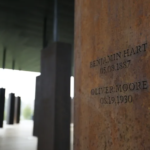By MARY PEREZ
The Sun Herald
BILOXI, Miss. (AP) _ The new Biloxi Maritime & Seafood Industry Museum will reopen Saturday, nine years after it was destroyed when Hurricane Katrina swept ashore at Point Cadet. It will again tell the 300-year story of South Mississippi’s connection with the sea.
The museum will have free admission Saturday and Sunday.
Visitors will discover photographs, videos and hands-on exhibits that recall the industry that once earned Biloxi the title of Seafood Capital of the World. Sharing the spotlight _ literally _ will be the history of recreational boating, the shipbuilders who still work the craft, and Katrina and other hurricanes that changed the landscape but not the resolve of people to live near the water.
The new museum was designed by Daria Pizzetta with H3 Hardy Collaboration Architecture of New York, who was raised on Point Cadet. She designed the three-story museum with a wall of windows facing the bay.
“She calls it a ship in a bottle,” said Robin Krohn David, executive director of the Seafood Museum since 1988.
Colored lights will illuminate the sails of restored boats in the museum’s Grand Hall so they can be seen by people entering the city across the Biloxi Bay Bridge.
Pizzetta will be honored as this year’s Biloxian Made Good in October at the new museum.
As impressive as the architecture of the museum is, it’s much more than a building, said Gerald Blessey. He was mayor of Biloxi in 1983, when the city formed a nonprofit corporation and after 25 years of talking about it, actually opened a museum in March 1986.
C. Paige Gutierrez wrote a booklet in 1983 that captured the essence of why the city should have the museum, said Blessey, to whom she is married. In “The Cultural Legacy of Biloxi’s Seafood Industry” Gutierrez said a good museum is a tourist attraction but first and fore most it is an educational institution.
“Biloxians feel the tug of two cultures,” she said. “Standardized American culture is not in danger of disappearing, but Biloxi’s local heritage could disappear,” she wrote, “Only Biloxians can prevent this from happening.”
Whistles from factories that called people to work will blow to open the museum and re-enactors will portray the Hermit of Deer Island, the Wreck of the Emma Harvey and the founding fathers of the Biloxi seafood industry on Saturday and Sunday.
Val Husley, a Biloxi native, is fabricating and installing the exhibits for the museum and restoring the artifacts.
“Ask anybody what defines the coast in Biloxi,” said Blessey. “It’s the seafood industry. So much is getting forgotten and left behind. It’s exhibits of the past but the culture is alive and evolving.”
The original Seafood Museum opened in the former Coast Guard barracks at Point Cadet, where sea planes were launched to look for German submarines in the Gulf, “and they found a few,” Blessey said.
The facilities were given to the city after World War II. Damaged by Hurricane Camille in 1969, the barracks were still empty 14 years later and were turned into the museum.
Blessey said volunteers were involved in creating, opening and operating the museum.
Beyond the museum, they oversee the operation of the two Biloxi Schooners and the Sea-N-Sail Camp that teaches children to throw a cast net and takes them to the barrier islands aboard a schooner. For many of the children, it’s their first time on a boat, Blessey said.
___
Online: www.maritimemuseum.org
___
Information from: The Sun Herald, http://www.sunherald.com










